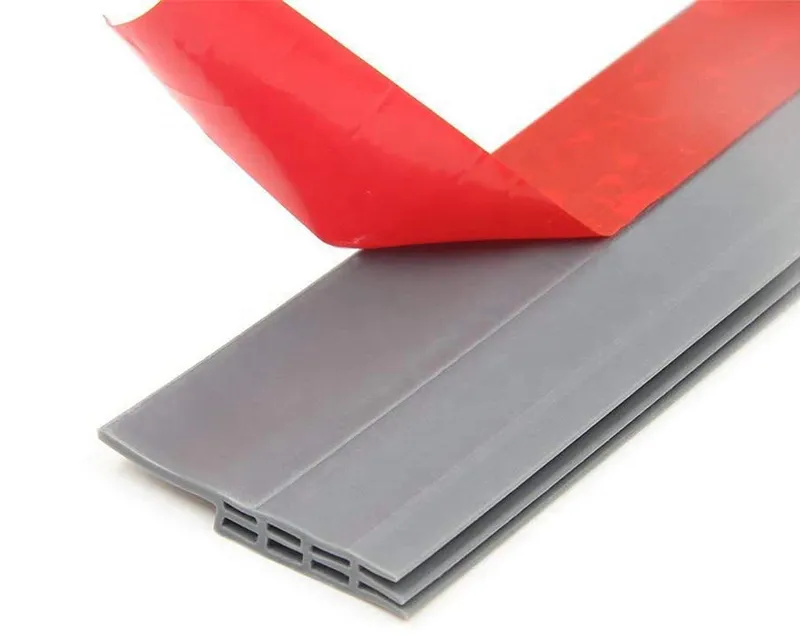T-Shaped Rubber Sealing Strip for Enhanced Durability and Versatile Applications
The Versatility of T-Shaped Rubber Seal Strips
In a world where efficiency and durability are pivotal in manufacturing and construction, T-shaped rubber seal strips have carved out a niche that showcases their versatility and utility. These innovative components are crucial in a variety of applications, including doors, windows, automotive parts, and industrial machinery. Understanding their function, composition, and benefits can provide insight into why they are increasingly chosen for both commercial and residential projects.
What Are T-Shaped Rubber Seal Strips?
T-shaped rubber seal strips are flexible sealing solutions typically made from high-quality rubber or silicone materials. Their distinctive T shape enables them to form tight seals in gaps or joints where two surfaces meet. The horizontal part of the T functions as the primary sealing surface, while the vertical part fits snugly into a groove or slot, ensuring that the seal remains in place during operation.
These seal strips are designed to prevent air, water, dust, and noise from entering or escaping through gaps. Their adaptability makes them suitable for a range of applications, including ingress and egress points, such as doors and windows, where they help improve energy efficiency by reducing drafts. In vehicles, they protect against water leaks and road noise, enhancing comfort and safety.
Key Benefits
1. Energy Efficiency One of the primary advantages of using T-shaped rubber seal strips is their contribution to energy efficiency. By effectively sealing gaps, they minimize the loss of heated or cooled air from buildings, leading to reduced energy bills and a smaller carbon footprint.
2. Weather Resistance These rubber seals are designed to withstand various environmental conditions. They are durable and resistant to moisture, extreme temperatures, and UV exposure, making them an ideal choice for outdoor applications.
3. Noise Reduction T-shaped rubber seal strips contribute significantly to acoustical insulation. By sealing gaps that allow sound to travel, they create quieter indoor environments, which is invaluable in residential and commercial settings alike.
4. Easy Installation and Replacement Another appealing feature is the ease with which T-shaped rubber seal strips can be installed or replaced. Most can be cut to size and fitted without the need for special tools, making them a convenient solution for repairs or upgrades.
t shaped rubber seal strip

5. Versatility Their adaptability extends beyond residential doors and windows. T-shaped rubber seal strips can be utilized in a variety of industrial applications, including on machinery and equipment, to enhance performance and longevity.
Applications
- Doors and Windows T-shaped rubber seal strips are commonly used in residential and commercial doors and windows. They offer effective sealing against drafts and moisture while also providing sound insulation.
- Automotive In the automotive sector, these seals prevent wind and water from entering the vehicle, protecting the components and enhancing passenger comfort.
- Appliances Many home appliances, such as refrigerators and washing machines, incorporate rubber seal strips to ensure airtight and watertight closures.
- HVAC Systems They help maintain the efficiency of heating, ventilation, and air conditioning systems by sealing joints and ductwork.
- Industrial Equipment T-shaped rubber seals are used in machinery and equipment to prevent contamination and enhance safety by eliminating gaps where debris could enter.
Conclusion
In conclusion, T-shaped rubber seal strips are an indispensable solution across various industries and applications. Their ability to improve energy efficiency, enhance durability, and increase operational comfort makes them a preferred choice for many builders and manufacturers. Whether you are a homeowner looking to improve your residence's insulation or a professional seeking reliable sealing solutions for industrial machinery, T-shaped rubber seal strips offer an effective and versatile option that meets a multitude of needs. With ongoing advancements in materials and design, the future looks bright for T-shaped rubber seal strips, as they continue to evolve in function and efficacy.
-
Under Door Draught Stopper: Essential ProtectionNewsJul.31,2025
-
Garage Door Seal and Weatherstrips for ProtectionNewsJul.31,2025
-
Edge Banding Tape for Perfect EdgesNewsJul.31,2025
-
Table Corner Guards and Wall Corner ProtectorsNewsJul.31,2025
-
Stair Nose Edging Trim and Tile Stair SolutionsNewsJul.31,2025
-
Truck Bed Rubber Mats for Pickup BedsNewsJul.31,2025
-
Window Weather Stripping for Noise ReductionNewsJul.29,2025